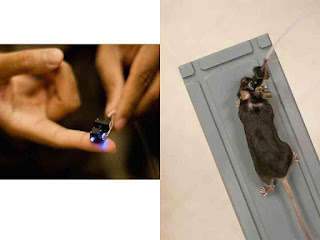Imagine this your sitting on your sofa picturing the future in your head that you thought only you could see. But the next day your Inventor friend swings by and describes exactly what you pictured the other day. You would stand there lost and astonished wondering just how he knew exactly what you thought.
Nikola Tesla in 1839 became absolutely convinced that a definite image formed in your thoughts, must through reflex action produce an image on the retina corresponding to the one imagined. He believed it could be read by a suitable apparatus and then illuminated onto a screen by taking photographs. After this, you could use ordinary methods to project it and play your thoughts like a slideshow. This makes our minds an open book. Unfortunately, Tesla’s Plan didn’t work out as expected. researchers to this very date are still studying his vision and exploring the idea of mind-reading machines. Looking at mind-reading, scientists have developed algorithms that can learn to interpret brain signals and reproduce a rough version of images seen in a person’s mind. Scientists have also created artificial retinas through mathematical analyses of how real retinas convert images to electrical impulses to send up to the brain.
Neuroscientists have made developments in this field and are on the path to inventing the thought camera itself. Inscopix is a company that has created a working real-time camera that is the first live-action brain camera that allows us to see parts of it we have never seen before. It as of now only works on mice and the company says that the next model will be for primates; which should include us, humans, too. It comprises 2 parts. First mice are injected with an extremely-thin needle-like lens, or, they are bred in the lab with groups of fluorescent cells that light up in front of the camera. Once certain sets of the mice brain neurons are glowing, researchers can fit the rodents with fingertip-sized cameras, which the mice wear like a helmet. One of the people who helped build this camera is professor Mark Schnitzer, and he along with his team at Stanford realised that some specific neurons were firing when the mouse was in a specific place. When more research was done; they were able to see how the brain adapts to new environments. At MIT, researchers are now using the camera to disentangle which neurons convey space and time in the brain.
Nikola Tesla started out with a failed attempt at an invention that could change the face of science completely. But the hope of creating a thought camera has not died out just yet and will not be lost any time soon. In today’s progressing world it is not long before the thought camera will be invented and your, mine and everybody else’s thoughts will no longer be private.
References:
Primates: Primate, in zoology, any mammal of the group that includes the lemurs, lorises, tarsiers, monkeys, apes, and humans.
Nikola Tesla: Serbian American inventor, electrical engineer, mechanical engineer, physicist, and futurist
Neuron: a specialized cell transmitting nerve impulses; a nerve cell.
Neuroscientists: Neuroscientists focus primarily on the study and research of the nervous system
Retina: a layer at the back of the eyeball that contains cells sensitive to light, which trigger nerve impulses that pass via the optic nerve to the brain, where a visual image is formed.
Inscopix: Inscopix is a neurotechnology company in Silicon Valle.
Sources:


Comments
Post a Comment